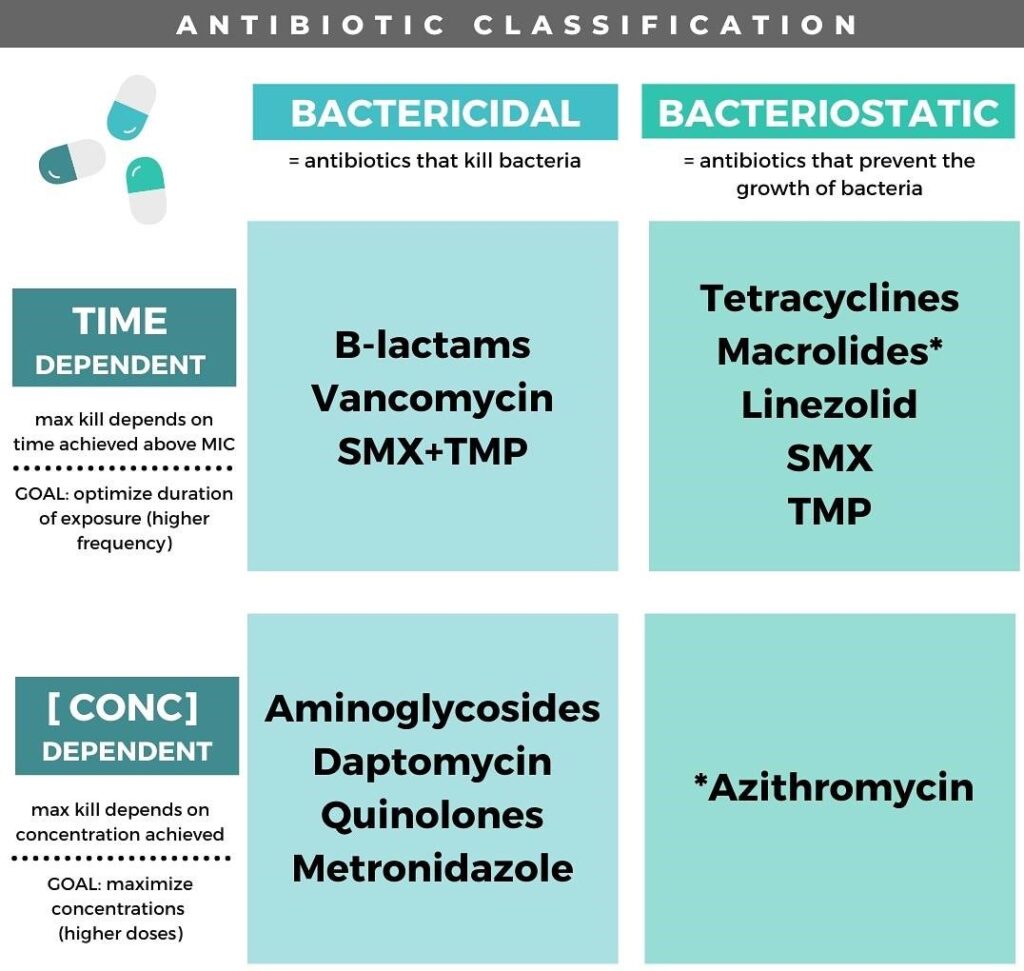Extended infusions (and continuous infusions) are all the rage. Why do they work for some drugs and not others?
First, we have to look at the pharmacokinetics of the drugs. Beta-lactams are the most common drugs given by extended or continuous infusion.

Beta-lactams are most effective when their plasma concentrations persistently exceed the minimum inhibitory concentration (time over the MIC = better killing).
Standard intermittent infusions, administered over 30-60 minutes, lead to fluctuating drug concentrations with characteristic peaks and troughs. Conversely, prolonged infusions, either extended over 2-4 hours or given continuously, deliver more stable serum levels that can consistently exceed the minimum inhibitory concentration required for the targeted pathogen. For concentration-dependent antimicrobials, like aminoglycosides, that doesn’t usually lead to better outcomes.
Concentration-dependent antimicrobials usually have stronger post-antibiotic effects (PAE). With those antimicrobials, you can hit them high and then let them wane (which is why you can give high-dose, once daily dosing of aminoglycosides for some infections). In these cases, once daily dosing has shown enhanced concentration-related bacterial killing, increased aminoglycoside postantibiotic effect (PAE), leukocyte enhancement, decreased adaptive resistance of the bacterial pathogens, and less toxicity to the patient with an overall lower daily dose (Matthew S. Stankowicz, Jad Ibrahim, Daniel L. Brown, Once-daily aminoglycoside dosing: An update on current literature, American Journal of Health-System Pharmacy, Volume 72, Issue 16, 15 August 2015, Pages 1357–1364).

This graph displays traditional pulse dosing. The higher the MIC (minimum inhibitory concentration) the more of an effect the extended infusion can have. This makes sense as time above MIC is the real outcome we want. In the above graph, imagine the red MIC moves up or down the Y-axis. Even with intermittent dosing, If an organism has a low enough MIC, the curve will be above it for more time. As the MIC creeps up, the curve gets steeper. Beta-lactams require a certain amount of time over MIC to be effective, which varies by drug, but here are a few generalizations.
| Beta-Lactam | %time of MIC to be Bacteriostatic | %time of MIC to be Bacteriocidal | |
| cephalosporin | 40% | 60-70% | |
| penicillins | 30% | 50% | |
| carbapenems | 20% | 40% |
Drusano, G. Antimicrobial pharmacodynamics: critical interactions of ‘bug and drug’. Nat Rev Microbiol 2, 289–300 (2004). https://doi.org/10.1038/nrmicro862
